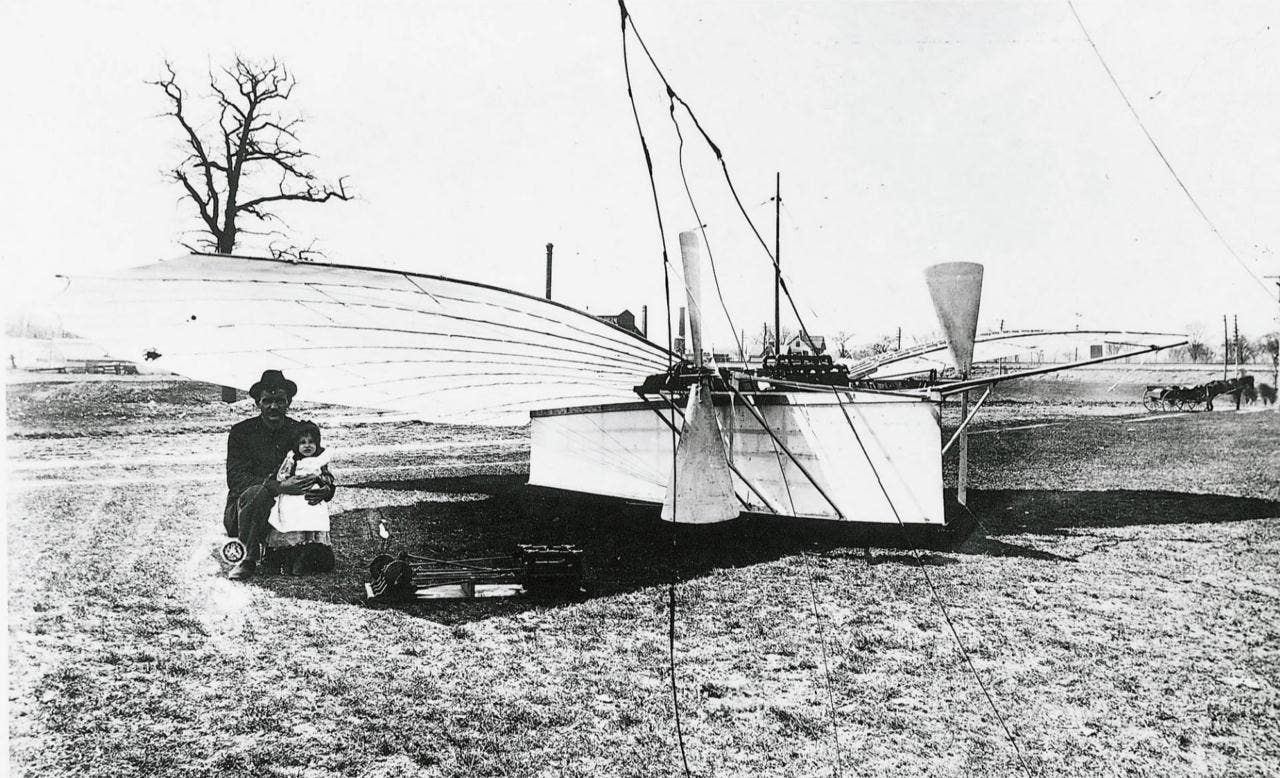
Gustave Whitehead and his daughter next to his No. 21 aircraft. Gustave-Whitehead.com
On Monday, officials from Bridgeport and Fairfield, Connecticut, once again staked their claim to the "First in Flight" and "birthplace of powered flight" bragging rights by declaring August 14 as Gustave Whitehead Day on the 116th anniversary of his alleged inaugural powered flight. Bridgeport Mayor Joe Ganim and Fairfield First Selectman Mike Tetreau were joined by Whitehead's great-great-granddaughter Sammie Kusterer, as well as Fairfield resident Andy Kosch, who previously built and flew a replica of Whitehead's Condor No. 21 airplane.
"My dad always told us stories," Kusterer said of the occasion. "They have a lot of newspaper articles and everything and we were taught from a very young age that he was the first one who did it."
Additionally, Kosch provided his own evidence for why Whitehead finally deserves his place in the spotlight: "This thing flew so easily for me that Gustave Whitehead must have gotten off the ground." Like others before him, Kosch also noted that "many, many eyewitnesses" swore that Whitehead flew his plane in 1901, despite the people who also claimed it never happened.
In response to Connecticut passing legislation that named Whitehead "First in Flight" in 2013, the Journal of Aeronautical History published "The Flight Claims of Gustave Whitehead," which examined newspaper articles about Whitehead from as far back as 1898. It even included a 1935 report from Popular Aviation (which is now Flying magazine) that asked the question: "Did Whitehead Precede Wright?"
The paper's author claimed a 1901 article in the Bridgeport Sunday Herald was published on a page reserved for "sensational stories with a humorous twist." Furthermore, he wrote, one of the witnesses mentioned in that article reportedly told an investigator in 1936 that he "was not present and did not witness any airplane flight on August 14, 1901."
On July 8, 2014, Scientific American offered its own debunking (https://www.scientificamerican.com/article/scientific-american-debunks-claim-gustave-whitehead-was-first-in-flight/), claiming that Whitehead's supporters have used "text plucked from the old pages of Scientific American" to verify his purported legacy. "In determining whether the Wright Brothers or Gustave Whitehead first successfully piloted an airplane, I have enough data — the original text within its original context — at hand, (and now, dear reader, so do you) to show that Scientific American quite clearly gives the priority to the Wright brothers," Daniel C. Schlenoff wrote.
Unfazed by these (and other) debunkings, Whitehead's proponents remain steadfast in their belief that he is the true heir to the title of "First in Flight," and John Brown kept the debate brewing last year with his book, Gustave Whitehead and the Wright Brothers: Who Flew First?
But as we learned when Connecticut passed its “First in Flight” measure four years ago, and Ohio responded with its own resolution to “repudiate” that claim, this is truly a chicken and egg debate.
"If you challenge history of over 100 years ago, you need to be convincing and clear that was a bad call and you need evidence to overrule it," Ohio Rep. Rick Perales told The Guardian in 2015. Connecticut state senator Kevin Kelly fired back: "I'm curious to know how Ohio lawmakers can suggest Whitehead never flew. Where's their proof?"
With little more than an old, blurred photograph and a contested collection of eyewitness reports, one man's proof will simply continue to be another man's 116-year-old fake news.

Sign-up for newsletters & special offers!
Get the latest FLYING stories & special offers delivered directly to your inbox






